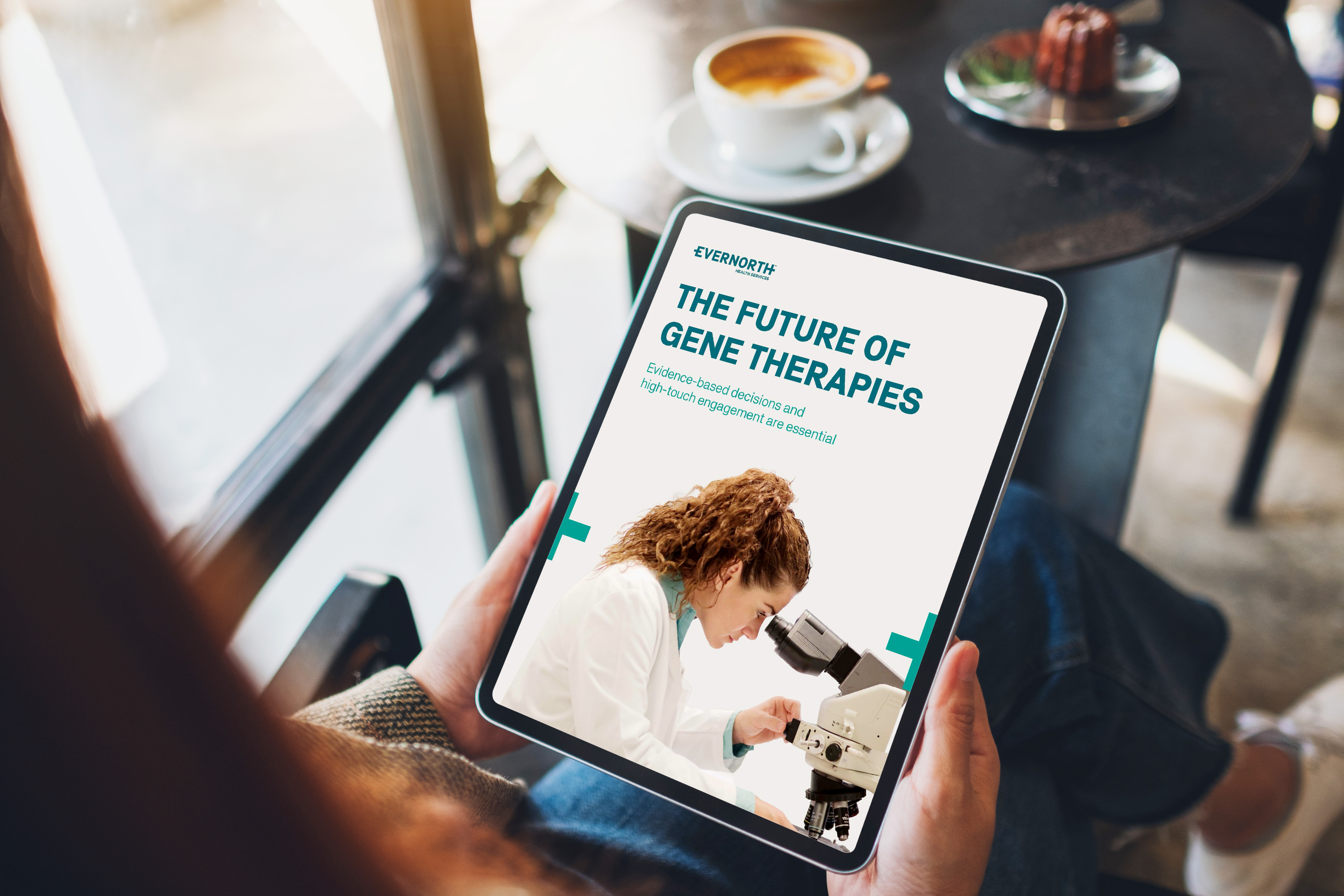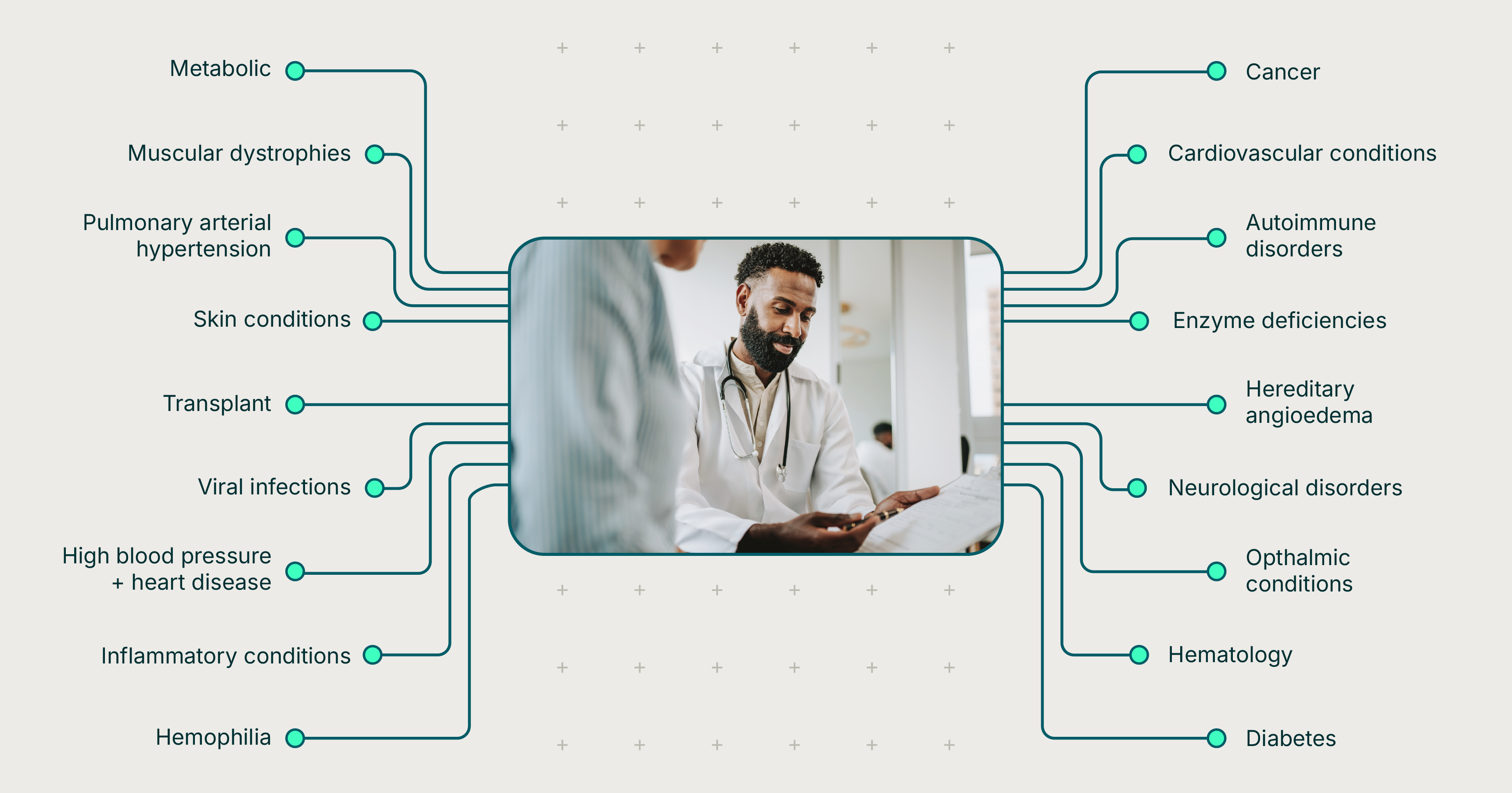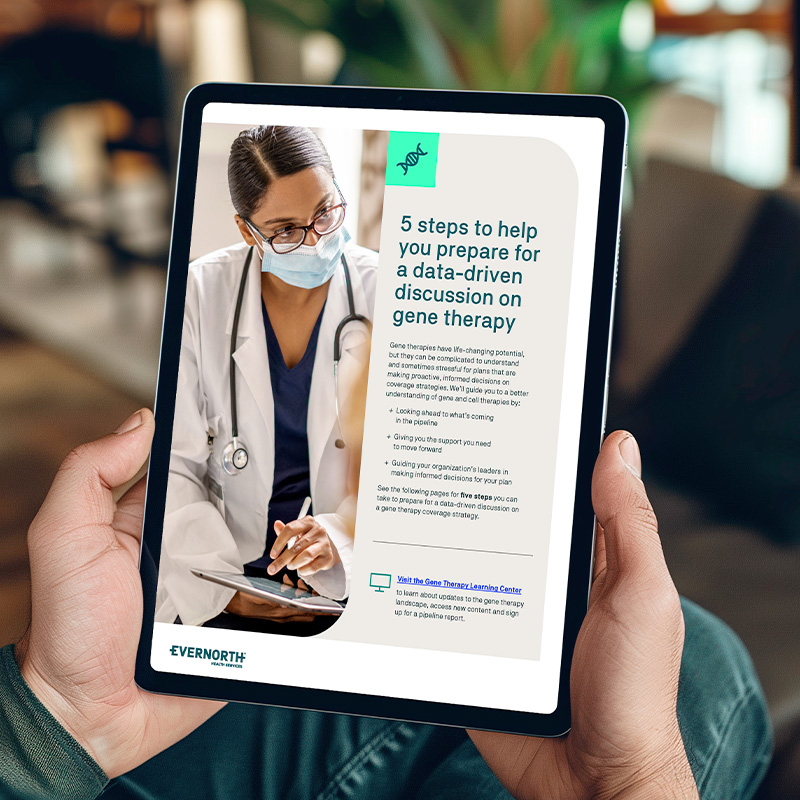Understanding gene therapies
Learn more about current and upcoming treatments in development by signing up for our gene therapy pipeline report.

What are cell and gene therapies?
Cell therapy is the transfer of a specific cell type into a person to treat or prevent a disease1. Gene therapies are innovative, highly targeted medications that can edit genetic materials in a patient's affected cells and tissues. The availability of genetic therapies for both rare and common genetic conditions is taking off.
Evernorth can help navigate through this complex emerging landscape, serving as your guide from pipeline tracking to and planning for impact through distribution and management solutions.

Gene therapies, today and tomorrow
By supporting and encouraging evidence based access to gene therapies, payers and other segments of the health care ecosystem will be positioned to benefit from future advancements and biopharmaceutical breakthroughs that drive systemic change.

A life-changing—but expensive—treatment option
Gene therapies promise extraordinary outcomes; however, it is imperative to prepare for their high costs which can range from $850k to $4.25M.
$5B
to research and develop a gene therapy2
$18.5B
forecasted annual cost in the U.S. by 20333
7.6
years is the average time it takes to receive a diagnosis for a rare condition4
Removing the burden for patients and plans
Navigating gene therapy treatment shouldn't add to the stress of living with a rare condition. Patients facing these challenges often find themselves trying to manage care and benefits on their own. The health care system can be overwhelming with complex coverage details and confusing options.

The need for affordable access
Plans have a spectrum of options to consider with the influx of novel gene and cell therapies. By offering proactive and comprehensive coverage, plan sponsors can reduce financial risk and control costs while ensuring their members have access to these groundbreaking treatments.
$5B
Cost management
Each year comes with a new wave of approvals to plan for. Planning ahead for potential gene therapy claims can help payers better manage future costs.
$18.5B
Expanding access
Supporting access to gene therapies supports health care technology that could help fight cancer and reverse rare diseases, giving hope to those who many who live with these conditions.
7.6
Competitive benefits
Including gene therapy coverage in your benefits can help set your organization apart by illustrating your strong commitment to the health of your employees and their families.
Making the gene therapy pipeline actionable
Developing a well-informed, proactive approach is critical for plan sponsors to assess their potential exposure to gene therapy. Every population is different, and the pipeline will continue to grow. Access our cell and gene therapy pipeline report.
50-75
gene and cell therapies expected to be approved in the U.S. by 20304
1,000+
gene and cell therapies currently in development4
10X
The $5.2B gene and cell therapy market is estimated to grow tenfold by 20315
Cell and gene therapies are being developed to treat both rare and common conditions
The pipeline is predicted to increase to treat higher-prevalence conditions.

Data-driven gene therapy discussion guide
Not every approved gene therapy will be appropriate for each individual diagnosed with the indicated condition, as other effective treatment options may be better suited for many individuals.
Each drug’s expected utilization should be evaluated based on patient demographics, disease severity, client-specific mix and clinical trial data and literature. Sophisticated forecasting models that assess these areas provide a better estimate of potential gene therapy utilization than traditional tools.

Frequently asked questions
Sources
- American Society of Gene & Cell Therapy “Cell therapy basics” Cell therapy basics. December 18, 2023.
- Innovative Genomics Institute “Paying for CRISPR Cures: The Economics of Genetic Therapies” December 16, 2019.
- BioSpace “NU.S Gene Therapy Market Size to Hit USD 18.5 Billion by 2033” February 26, 2025
- Global genes “Rare Disease Impact Report: Insights from patients and the medical community” April 2013.
- Milken Institute “Cell and Gene Therapies: Looking Ahead to 2022” January 4, 2022.
- GlobeNewswire “Gene Therapy Market Surges to USD 50.6 Billion by 2031, Propelled by 26.88% CAGR - Verified Market Research® July 17, 2024.






